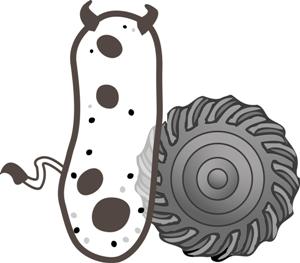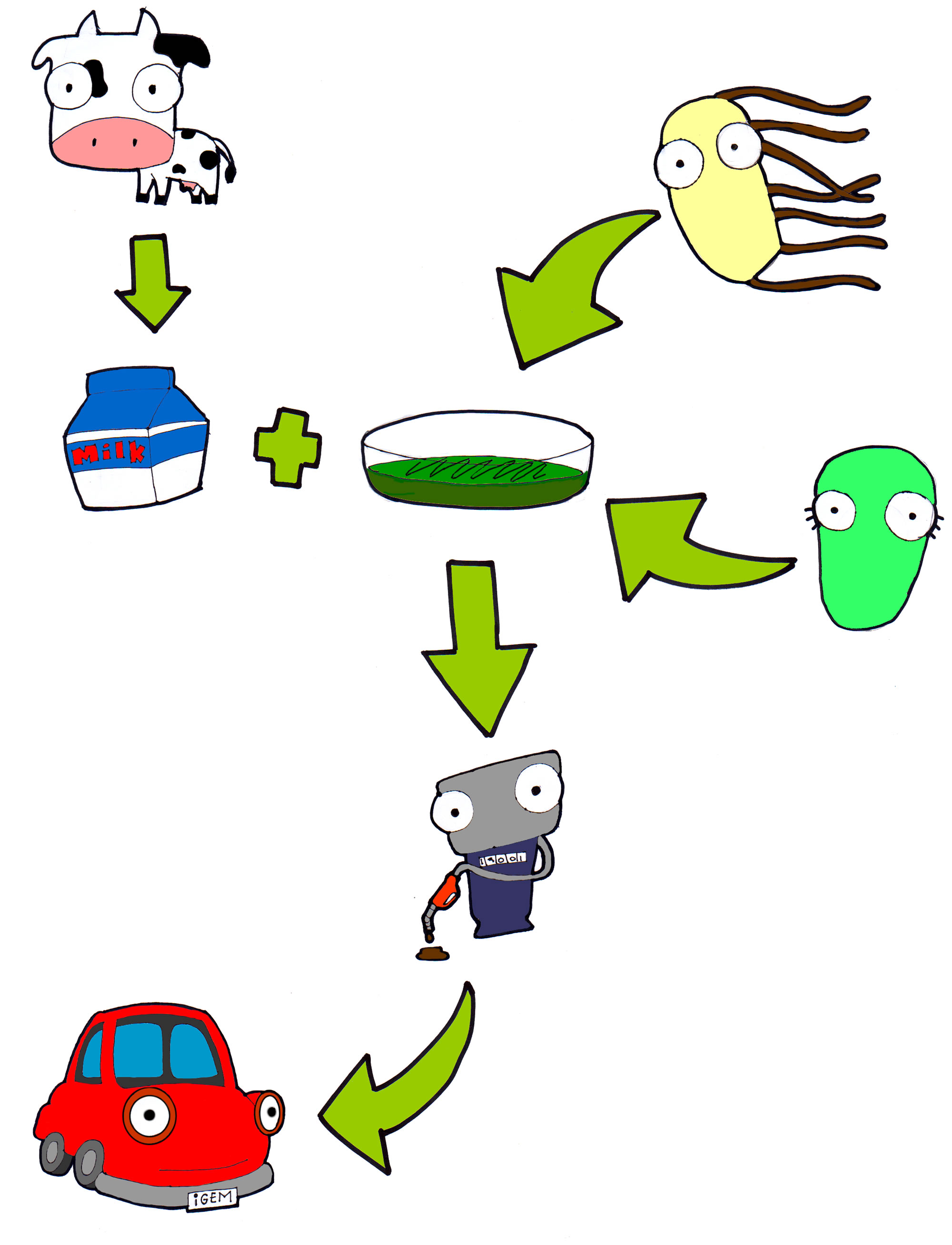Team:Costa Rica-TEC-UNA/Project
From 2012.igem.org
ChaosPaladin (Talk | contribs) (→Overall project) |
ChaosPaladin (Talk | contribs) (→Project Details) |
||
| Line 174: | Line 174: | ||
== Project Details== | == Project Details== | ||
| + | == Project Details== | ||
| + | As mentioned before, our project consists in the overexpression of DGAT in ''R.opacus'' which will led, we presume, to a massive accumulation of TGAs inside the cell. Once the bacteria has enough of these lipids, we separate it from the medium, put them in water and by adding nitrile (or its chemical equivalent) the expression of a lysozyme and a holin coding genes will trigger inducing lysis. This step will help us to retrieve the TGAs in a fast and easy way without the use of external energy (thermolysis) or longer protocols. | ||
| + | On the other hand, E.coli was modified to secrete | ||
| + | |||
| + | [[File:Cibus-Genes.png|center|frameless|500px]] | ||
=== The Experiments === | === The Experiments === | ||
| + | In this first phase of the project we focused our efforts to express the B. cepacia's lipase in E.coli using the T7 promoter to obtain a constitutive expression of the gene. Also, we plan to conduct some experiments using the protein OmpA in order to evaluate its effect on the secretion levels of our lipase. | ||
== Results == | == Results == | ||
/a> | /a> | ||
/a> | /a> | ||
Revision as of 16:38, 26 September 2012
Overall project
Cibus 3.0 takes biodiesel production to a new level using dairy industry wastes. Annually, about 675 thousand tons of whey are thrown into rivers. This because at the present time there isn’t a program for reusing this waste, and producers find it difficult to treat them properly because of its chemical composition.
Our idea consists in the modification of two bacteria: Rhodococcus opacus and Escherichia coli, both maintained in whey based medium. Overexpression of the natural triglycerides (TGA) producing ability of R. opacus is achieved by inserting an optimized sequence of a DGA acyltransferase gene, constitutively expressed, and an inducible “suicide device” in order to extract them with ease.
On the other hand, E. coli is transformed with an optimized sequence of a lipase from B. cepacia which is secreted to the medium where we extract it continuously and encapsulate it. Now all what it takes to finish the job is adding our encapsulated enzymes to the extracted TGAs and mixing them with some ethanol to obtain our biodiesel!
Project Details
Project Details
As mentioned before, our project consists in the overexpression of DGAT in R.opacus which will led, we presume, to a massive accumulation of TGAs inside the cell. Once the bacteria has enough of these lipids, we separate it from the medium, put them in water and by adding nitrile (or its chemical equivalent) the expression of a lysozyme and a holin coding genes will trigger inducing lysis. This step will help us to retrieve the TGAs in a fast and easy way without the use of external energy (thermolysis) or longer protocols.
On the other hand, E.coli was modified to secrete
The Experiments
In this first phase of the project we focused our efforts to express the B. cepacia's lipase in E.coli using the T7 promoter to obtain a constitutive expression of the gene. Also, we plan to conduct some experiments using the protein OmpA in order to evaluate its effect on the secretion levels of our lipase.
Results
/a> /a>
 "
"


